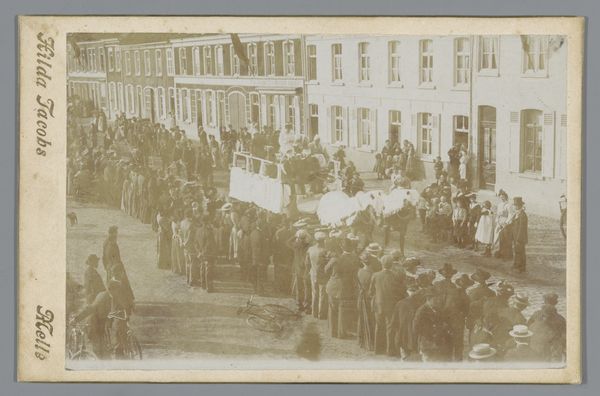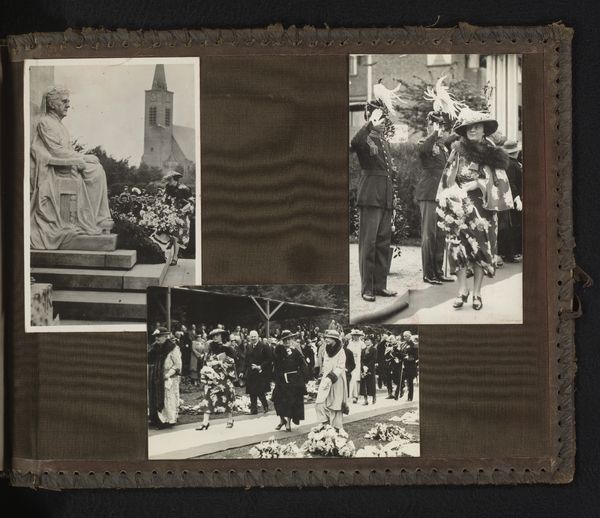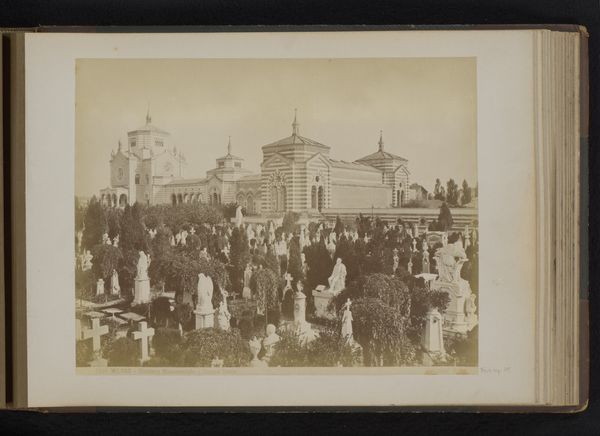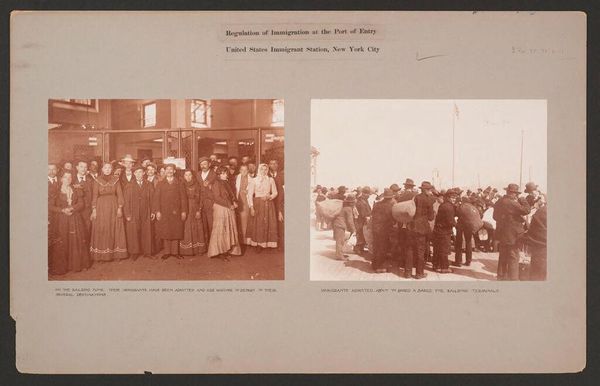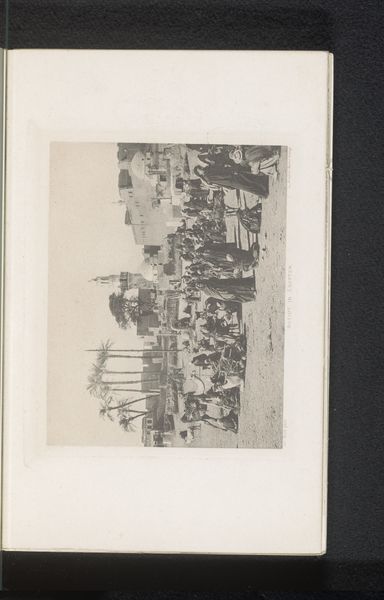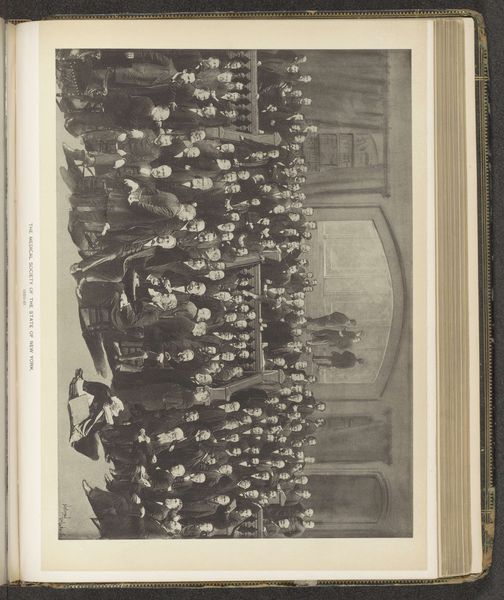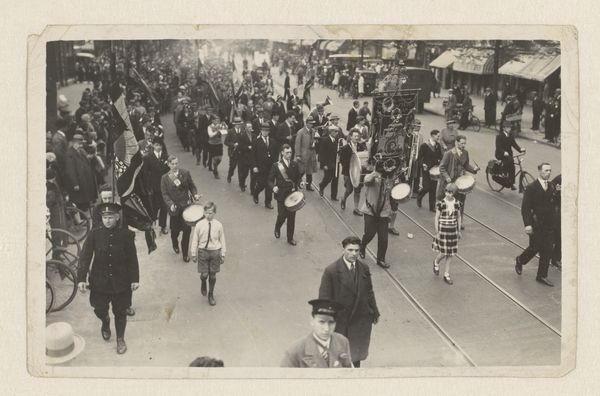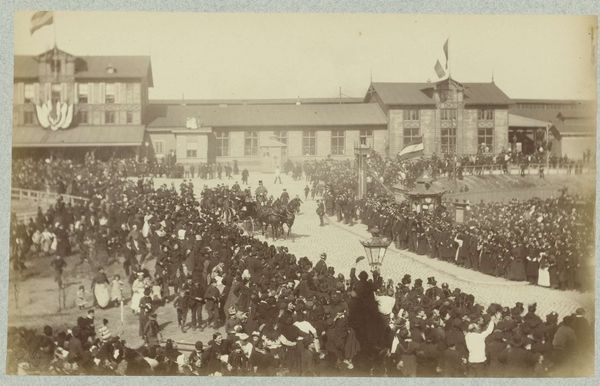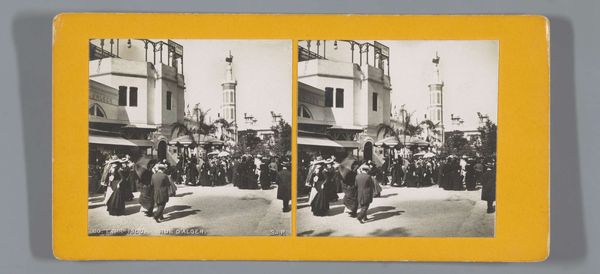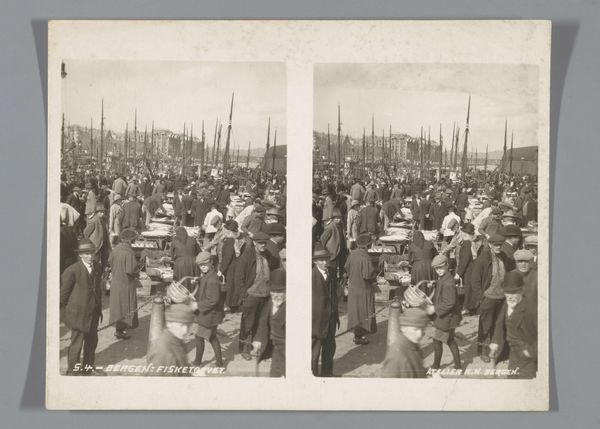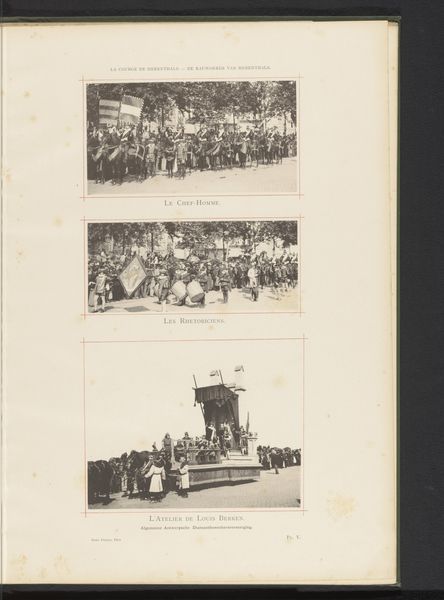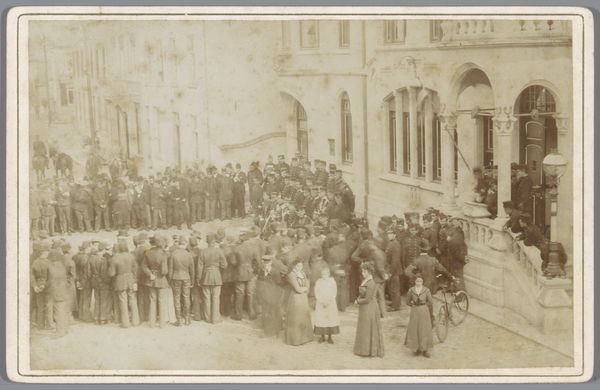
Willem Witsen met groep voor Boliviaans Paviljoen (San Francisco) c. 1860 - 1915
0:00
0:00
photography, gelatin-silver-print
#
portrait
#
landscape
#
photography
#
group-portraits
#
gelatin-silver-print
#
cityscape
#
paper medium
#
modernism
Dimensions: height 182 mm, width 580 mm, height 204 mm, width 605 mm
Copyright: Rijks Museum: Open Domain
Curator: This gelatin silver print, taken somewhere between 1860 and 1915, captures a scene titled "Willem Witsen with group in front of Bolivian Pavilion (San Francisco)". It's held here at the Rijksmuseum. Editor: Immediately, the image overwhelms with its textured landscape, but also exudes an oddly formal atmosphere. So many people in the same photograph demand the eye grapple with both the collective and the individual. Curator: Precisely, consider the dynamic tension created by the photograph's composition. Notice how the artist directs your gaze from the foreground crowd toward the distinct architectural details of the Bolivian Pavilion behind the building facade. Editor: Yes, but that "Bolivian Pavillion"—what statements is the photographer making? I mean, what was the process of assembling the photo and how it’s viewed impacts our response to this sea of faces. Look at how so many different modes of labour are required to create something as relatively "simple" as this photo! Curator: From a Formalist perspective, it’s how the architecture interacts. Look at the repeated horizontal lines established through rooflines in the distant building, balanced by the more classical arches around that doorway at left, providing a structural coherence across a heterogeneous scene. Editor: Still, it's not enough to ignore that this moment— frozen as it is with early photographic technology — only existed because of a long, and largely obscured, supply chain that we are not invited to see here. From the silver extracted for the printing process to all the outfits made for those folks—we only have visual fragments that don't hint at the labor itself. Curator: Perhaps so, but let us also observe how that tonality interacts with our eye in unique ways. In short: even in these older silver gelatin processes, they deliver tonality, evenness, that has unique formal interest as image. Editor: But isn't that part of the rub of that argument, which isolates the photograph from the history, materials, labor of a global industry. Curator: Of course, of course! What a treat, that our brief time allows just a mere introduction to layers of insight. Editor: It does feel we’ve merely scratched the surface. Maybe, now, more patrons will question its material roots of artistic creations and what unseen costs might actually allow us the luxury of viewing these.
Comments
No comments
Be the first to comment and join the conversation on the ultimate creative platform.
